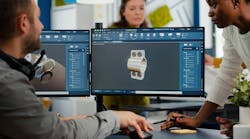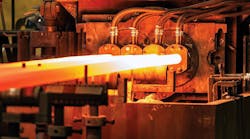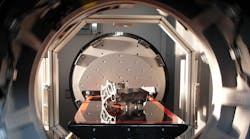The National Science Foundation and two universities have established a research center dedicated to developing technologies for maximizing recovery and recycling of metals used in manufactured products and structures. The NSF’s five-year, $400,000 award will fund the cost of establishing the center and recruiting corporate participants, which may include scrap yards, disassembling companies, municipal waste centers, shredding companies, smelters, foundries, and manufacturers.
The universities are Worcester Polytechnic Institute in Worcester, MA, and Colorado School of Mines in Golden, CO, and the new Center for Resource Recovery and Recycling (CR3) will be co-located at each school.
CR3 is described as the first research center in the U.S. dedicated to developing new technologies for maximizing the recovery and recycling of metals used in manufactured products and structures. The purpose of these technologies would be to reduce the energy used and the carbon emitted during the production of these metals.
Diran Apelian, Howmet Professor of Mechanical Engineering at WPI and director of its Metal Processing Institute (MPI), said CR3 seeks 30-40 member companies to participate, each to pay $30,000 per year, setting total potential funding for the center at more than $6 million. Apelian will be the CR3’s director. Brajendra Mishra, professor and associate director of the Advanced Coatings and Surface Engineering Laboratory and the Kroll Institute for Extractive Metallurgy at CSM, will be associate director.
"Despite growing efforts to recycle metals, we still fail to recover half of the post-consumer metal scrap generated in this country and we rely on primary metals — those derived directly from ores — to fulfill two-thirds of our manufacturing needs," Apelian said. "The environmental benefits of reusing scrap instead of smelting primary metal are tremendous. For example, if we could increase the recovery of aluminum scrap by just one percent, we would save 600 million kilowatt-hours of electricity and keep 130 million tons of carbon out of the atmosphere."
Faculty and students associated with CR3 will collaborate with industry partners to research recycling and recovery technology to maximize the capture and reuse of post-consumer scrap and minimize the production of manufacturing scrap. This will include sensors, controls, and sorting technologies that can identify valuable metals and separate them from the waste stream, as well as new alloys that are easier to recycle.
WPI research will focus on metals used in structural applications, such as structural steel and aluminum automotive components. CSM will research metals used in functional applications, including high-value and rare-earth metals used in computers, electronics, and photovoltaics.
Corporate members of CR3 will help determine the direction of and benefit from the center's precompetitive research, and will have royalty-free rights to intellectual property resulting from that research. They will be able to work with university faculty and students and participate in graduate internship programs. In addition, members may sponsor supplementary research, for additional fees.
In addition to conducting research, CR3 will develop materials recycling and recovery curricula at WPI and Mines that will help prepare a workforce ready to meet the challenge of promoting sustainability in the materials industries.
Latest from Simulation/IT
Latest from Simulation/IT
Industry Events
FM&T's 2024 Guide to Exhibitors
April 19, 2024
Finishing
Digitalizing Shot Blasting
Feb. 2, 2024
Simulation/IT
Digitalizing Shot Blasting
Feb. 1, 2024
Simulation/IT
Technology for Managing APQP
Feb. 1, 2024
New Products
Updated CPU Optimizes Workflows
Oct. 24, 2023
Melt/Pour
Opening the Black Box of Iron Casting
Oct. 3, 2023
Testing/QC
Inline CT Advances Digitalization
Sept. 1, 2023








